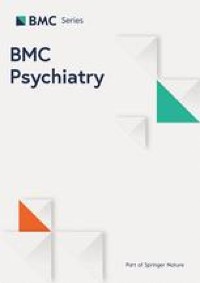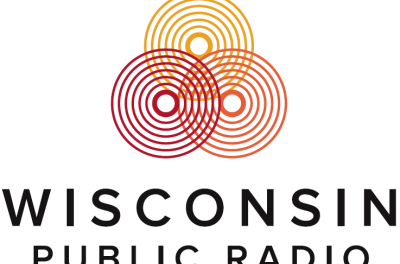
Hu Y, Wu X, Chen X, Maguire P, Wang D. Can increased cognitive load help people with subthreshold depression to forget negative information? J Affect Disord. 2021;283:384–94.
Xie Y, Ma M, Wu W, Zhang Y, Zhang Y, Tan X. Factors associated with depressive symptoms among the elderly in China: structural equation model. Int Psychogeriatr. 2021;33(2):157–67.
Qiu QW, Qian S, Li JY, Jia RX, Wang YQ, Xu Y. Risk factors for depressive symptoms among older chinese adults: a meta-analysis. J Affect Disord. 2020;277:341–6.
Chan WS, Law CK, Liu KY, Wong PW, Law YW, Yip PS. Suicidality in chinese adolescents in Hong Kong: the role of family and cultural influences. Soc Psychiatry Psychiatr Epidemiol. 2009;44(4):278–84.
Rock PL, Roiser JP, Riedel WJ, Blackwell AD. Cognitive impairment in depression: a systematic review and meta-analysis. Psychol Med. 2014;44(10):2029–40.
Bianco F, Bucciarelli V, Gallina S. The association between cardiovascular diseases and depressive symptoms in adults: the classic chicken or egg causality. Pol Arch Intern Med. 2021;131(6):497–8.
Diniz BS, Reynolds CF 3rd, Butters MA, et al. The effect of gender, age, and symptom severity in late-life depression on the risk of all-cause mortality: the Bambuí Cohort Study of Aging. Depress Anxiety. 2014;31(9):787–95.
Xu LY, Xu FC, Liu C, et al. Relationship between cerebellar structure and emotional memory in depression. Brain Behav. 2017;7(7):e00738.
Gong J, Wang J, Qiu S, et al. Common and distinct patterns of intrinsic brain activity alterations in major depression and bipolar disorder: voxel-based meta-analysis. Transl Psychiatry. 2020;10(1):353.
Zhang L, Sui RB. Proton magnetic resonance spectroscopy study on the metabolism changes of Cerebellum in patients with Post-Stroke Depression. Cell Physiol Biochem. 2017;41(4):1393–402.
Stoodley CJ, Schmahmann JD. Evidence for topographic organization in the cerebellum of motor control versus cognitive and affective processing. Cortex. 2010;46(7):831–44.
Baumann O, Mattingley JB. Functional topography of primary emotion processing in the human cerebellum. NeuroImage. 2012;61(4):805–11.
Adamaszek M, D’Agata F, Ferrucci R, et al. Consensus Paper: Cerebellum and Emotion Cerebellum. 2017;16(2):552–76.
Guell X, Gabrieli JDE, Schmahmann JD. Triple representation of language, working memory, social and emotion processing in the cerebellum: convergent evidence from task and seed-based resting-state fMRI analyses in a single large cohort. NeuroImage. 2018;172:437–49.
Stoodley CJ, Schmahmann JD. Functional topography in the human cerebellum: a meta-analysis of neuroimaging studie. NeuroImage. 2009;44(2):489–501.
Cattaneo Z, Ferrari C, Ciricugno A, et al. New Horizons on non-invasive brain stimulation of the Social and Affective Cerebellum. Cerebellum. 2022;21(3):482–96.
Schienle A, Scharmüller W. Cerebellar activity and connectivity during the experience of disgust and happiness. Neuroscience. 2013;246:375–81.
Ruggiero F, Dini M, Cortese F, et al. Anodal Transcranial Direct Current Stimulation over the Cerebellum enhances sadness recognition in Parkinson’s Disease Patients: a pilot study. Cerebellum. 2022;21(2):234–43.
Ferrari C, Ciricugno A, Urgesi C, Cattaneo Z. Cerebellar contribution to emotional body language perception: a TMS study. Soc Cogn Affect Neurosci. 2019;17(1):81–90.
Ferrari C, Fiori F, Suchan B, Plow EB, Cattaneo Z. TMS over the posterior cerebellum modulates motor cortical excitability in response to facial emotional expressions. Eur J Neurosci. 2021;53(4):1029–39.
E KH, Chen SH, Ho MH, Desmond JE. A meta-analysis of cerebellar contributions to higher cognition from PET and fMRI studies. Hum Brain Mapp. 2014;35(2):593–615.
Lupo M, Troisi E, Chiricozzi FR, Clausi S, Molinari M, Leggio M. Inability to process negative emotions in cerebellar damage: a functional Transcranial Doppler Sonographic Study. Cerebellum. 2015;14(6):663–9.
Gamond L, Ferrari C, La Rocca S, Cattaneo Z. Dorsomedial prefrontal cortex and cerebellar contribution to in-group attitudes: a transcranial magnetic stimulation study. Eur J Neurosci. 2017;45(7):932–9.
Stoodley CJ. The cerebellum and cognition: evidence from functional imaging studies. Cerebellum. 2012;11(2):352–65.
Luo X, Chen G, Jia Y, et al. Disrupted cerebellar Connectivity with the Central Executive Network and the Default-Mode Network in Unmedicated Bipolar II disorder. Front Psychiatry. 2018;9:705.
Guo W, Liu F, Liu J, et al. Increased cerebellar-default-mode-network connectivity in drug-naive major depressive disorder at rest. Med (Baltim). 2015;94(9):e560.
Alalade E, Denny K, Potter G, Steffens D, Wang L. Altered cerebellar-cerebral functional connectivity in geriatric depression. PLoS ONE. 2011;6(5):e20035.
Guo W, Liu F, Xue Z, et al. Abnormal resting-state cerebellar-cerebral functional connectivity in treatment-resistant depression and treatment sensitive depression. Prog Neuropsychopharmacol Biol Psychiatry. 2013;44:51–7.
Ma Q, Zeng LL, Shen H, Liu L, Hu D. Altered cerebellar-cerebral resting-state functional connectivity reliably identifies major depressive disorder. Brain Res. 2013;1495:86–94.
Bluck S, Levine LJ. Reminiscence as autobiographical memory: a catalyst for reminiscence theory development. Ageing Soc. 1998;18(2):185–208.
Webster JD. Construction and validation of the reminiscence functions Scale. J Gerontol. 1993;48(5):256–62.
Cappeliez P, O’Rourke N. Empirical validation of a model of reminiscence and health in later life. J Gerontol B Psychol Sci Soc Sci. 2006;61(4):237–44.
Ros L, Meléndez JC, Webster JD, et al. Reminiscence functions scale: factorial structure and its relation with mental health in a sample of Spanish older adults. Int Psychogeriatr. 2016;28(9):1521–32.
Hofer J, Busch H, Poláčková Šolcová I, Tavel P. When reminiscence is harmful: the relationship between self-negative reminiscence functions, need satisfaction, and DS among older people from Cameroon, the Czech Republic, and Germany. J Happiness Stud. 2017;18:389–407.
McDonald DD, Shellman JM, Graham L, Harrison L. The relationship between reminiscence functions, optimism, depressive symptoms, physical activity, and Pain in older adults. Res Gerontol Nurs. 2016;9(5):223–31.
Korte J, Bohlmeijer ET, Westerhof GJ, Pot AM. Reminiscence and adaptation to critical life events in older adults with mild to moderate DS[J]. Aging Ment Health. 2011;15(5):638–46.
King DB, Cappeliez P, Canham SL, O’Rourke N. Functions of reminiscence in later life: Predicting change in the physical and mental health of older adults over time. Aging Ment Health. 2019;23(2):246–54.
Tam W, Poon SN, Mahendran R, Kua EH, Wu XV. The effectiveness of reminiscence-based intervention on improving psychological well-being in cognitively intact older adults: a systematic review and meta-analysis. Int J Nurs Stud. 2021;114:103847.
Liu Z, Yang F, Lou Y, Zhou W, Tong F. The effectiveness of reminiscence therapy on alleviating depressive symptoms in older adults: a systematic review. Front Psychol. 2021;12:709853.
Yesavage JA, Brink TL, Rose TL, et al. Development and validation of a geriatric depression screening scale: a preliminary report. J Psychiatr Res. 1982;17(1):37–49.
Power JD, Mitra A, Laumann TO, Snyder AZ, Schlaggar BL, Petersen SE. Methods to detect, characterize, and remove motion artifact in resting state fMRI. NeuroImage. 2014;84:320–41.
Rolls ET, Huang CC, Lin CP, Feng J, Joliot M. Automated anatomical labelling atlas 3. NeuroImage. 2020;206:116189.
Zhu D, Yang Y, Zhang Y, et al. Cerebellar-cerebral dynamic functional connectivity alterations in major depressive disorder[J]. J Affect Disord. 2020;275:319–28.
Shinn AK, Roh YS, Ravichandran CT, Baker JT, Öngür D, Cohen BM. Aberrant cerebellar connectivity in bipolar disorder with psychosis. Biol Psychiatry Cogn Neurosci Neuroimaging. 2017;2(5):438–48.
Frodl T, Scheuerecker J, Albrecht J, et al. Neuronal correlates of emotional processing in patients with major depression. World J Biol Psychiatry. 2009;10(3):202–8.
Kennedy DP, Courchesne E. Functional abnormalities of the default network during self- and other-reflection in autism. Soc Cogn Affect Neurosci. 2008;3(2):177–90.
Zeng LL, Shen H, Liu L, et al. Identifying major depression using whole-brain functional connectivity: a multivariate pattern analysis. Brain. 2012;135:1498–507.
Carter RM, Huettel SA. A nexus model of the temporal-parietal junction. Trends Cogn Sci. 2013;17(7):328–36.
Mel’nikov ME, Petrovskii ED, Bezmaternykh DD, et al. fMRI response of parietal brain areas to sad facial stimuli in mild depression. Bull Exp Biol Med. 2018;165(6):741–5.
Chen Y, Wang C, Zhu X, Tan Y, Zhong Y. Aberrant connectivity within the default mode network in first-episode, treatment-naïve major depressive disorder. J Affect Disord. 2015;183:49–56.
Zhang YL, Zhong SM, Lai SK. The brain imaging mechanisms of visual cognitive impairment in depression. Chin J Behav Med Brain Sci. 2019;28(10):951–5.
Song XL, Mu XN, Ding MX, et al. The study of Brain fMRI in Task State of First-Episode patients with mild and moderate depression before and after treatment. J Clin Radiol. 2019;38(7):1174–9.
Teng C, Zhou J, Ma H, et al. Abnormal resting state activity of left middle occipital gyrus and its functional connectivity in female patients with major depressive disorder. BMC Psychiatry. 2018;18(1):370.
Fox MD, Snyder AZ, Vincent JL, Corbetta M, Van Essen DC, Raichle ME. The human brain is intrinsically organized into dynamic, anticorrelated functional networks. Proc Natl Acad Sci U S A. 2005;102(27):9673–8.
Yuan Y, Zhang Z, Bai F, et al. Abnormal neural activity in the patients with remitted geriatric depression: a resting-state functional magnetic resonance imaging study. J Affect Disord. 2008;111(2–3):145–52.
Manoliu A, Meng C, Brandl F, et al. Insular dysfunction within the salience network is associated with severity of symptoms and aberrant inter-network connectivity in major depressive disorder[J]. Front Hum Neurosci. 2014;7:930.
Van Overwalle F, Baetens K, Mariën P, Vandekerckhove M. Social cognition and the cerebellum: a meta-analysis of over 350 fMRI studies. NeuroImage. 2014;86:554–72.
Strata P, Scelfo B, Sacchetti B. Involvement of cerebellum in emotional behavior. Physiol Res. 2011;60(Suppl 1):39–48.
Tian J, Zhao L, Liu R, Lu Y2, Huang G, Gong R. Liang F, Gao Y, Zhang W. Functional connectivity of the cerebellar Crus I in type 2 diabetes mellitus: a resting-state functional MRI study. Chinese J Magn Reson Imaging. 2022;13(05):64–9.
Salmi J, Pallesen KJ, Neuvonen T, Brattico E, Korvenoja A, Salonen O, Carlson S. Cognitive and motor loops of the human cerebro-cerebellar system. J Cogn Neurosci. 2010;22(11):2663–76.
Naismith SL, Lagopoulos J, Ward PB, Davey CG, Little C, Hickie IB. Fronto-striatal correlates of impaired implicit sequence learning in major depression: an fMRI study. J Affect Disord. 2010;125(1–3):256–61.
Wu D, Chen T, Yang H, Gong Q, Hu X. Verbal responses, DS, reminiscence functions and cognitive emotion regulation in older women receiving individual reminiscence therapy[J]. J Clin Nurs. 2018;27(13–14):2609–19.
Fernández-Pérez D, Ros L, Escribano F, Serrano JP. Reminiscence, personality, coping and mood state in institutionalised older adults: a cross-sectional study. Psychogeriatrics. 2020;20(3):310–20.
Bahk YC, Choi KH. The relationship between autobiographical memory, cognition, and emotion in older adults: a review. Neuropsychol Dev Cogn B Aging Neuropsychol Cogn. 2018;25(6):874–92.
Köhler CA, Carvalho AF, Alves GS, McIntyre RS, Hyphantis TN, Cammarota M. Autobiographical memory disturbances in Depression: a Novel Therapeutic Target? Neural Plast. 2015;2015:759139.
James TA, Duarte A. Depressive symptoms are associated with reduced positivity preferences in episodic memory in aging. Neurobiol Aging. 2023;121:38–51.




